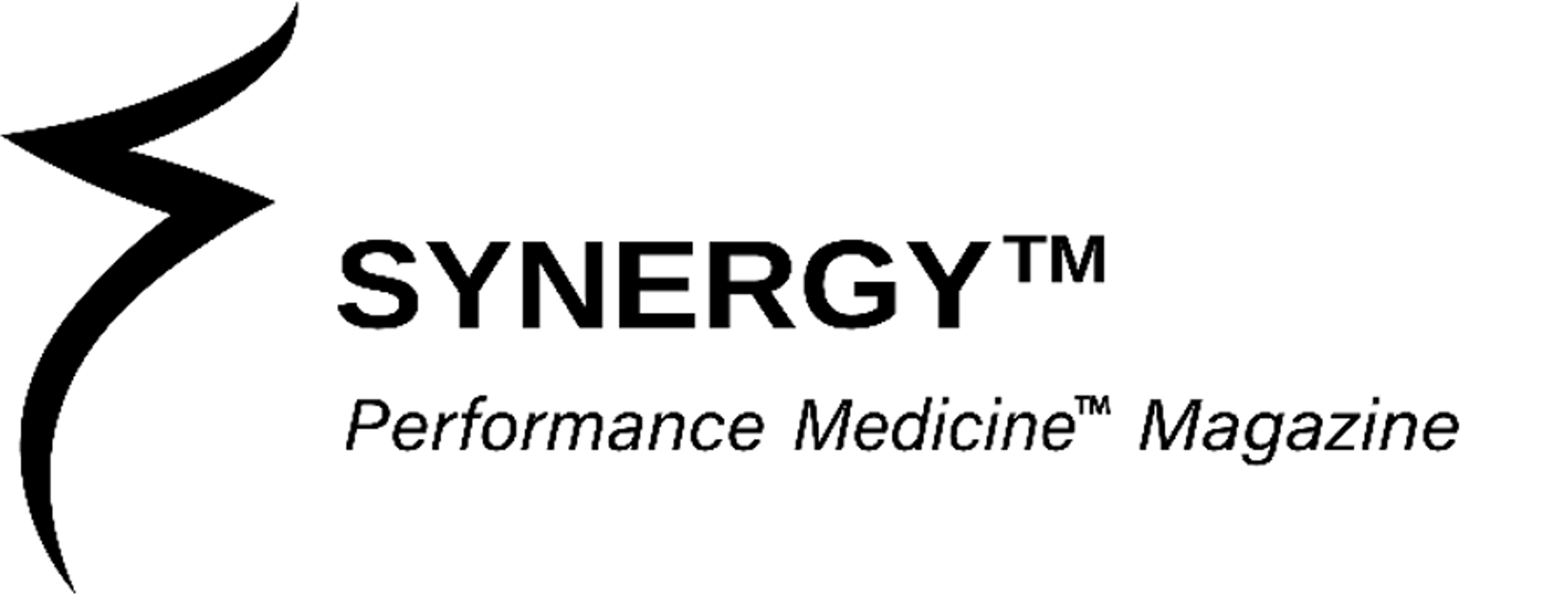Unhealthy Fitness
The beauty of endurance training is that it teaches us awareness. This awareness not only delineates effort from struggle but reality from perception – even though perception drives reality.
Being fit yet unhealthy is a recurring theme on the trails and in life – whether you are a weekend enthusiast or a podium finisher.
Habits determine lifestyle. One of its most insidious aspects is its ability to dull your awareness and discipline. Optimal health, performance, and longevity mandate an integrative approach.
Mindfulness manifests synergy which cultivates self-actualization.

The key to unlocking your health, performance, and longevity mansion doors is when lifestyle and chronotype are in sync. Homeostasis is the desired outcome, with synergy being the lynchpin.
Mastering resilience is a delicate, in-depth understanding of the human system. Life and endurance training are unpredictable, thanks to an endless array of physiological and psychological stressors. Yet, the subtle art of resilience flits amid our subconscious, igniting our bold, conscious, relentless commitment to excellence. Mindset is the key.
We have the technology to eliminate the guesswork, decode superhuman, and propel your limitless potential. The following modalities represent an unprecedented, bold medical paradigm leveraging cutting-edge technology to balance your autonomic nervous system, shift genetic expression, and propel mind-blowing results in life and sport.
→ Biometric Blood Analysis;
→ Biological Age Assessments;
→ Epigenetic Performance Testing;
→ Heart Rate Variability Testing
Autonomic Nervous System
Our mindset affects our homeostasis. One of the most impactful elements of the preceding approaches is whether or not your autonomic nervous system [ANS] is balanced.
The state of the ANS determines whether the body is in survival or regeneration mode. There are two branches of the ANS: the sympathetic nervous system [SNS – “fight/flight”] and the parasympathetic nervous system [PNS – “rest/digest”].
Prolonged SNS visits insidiously compromise normal bodily functions and negatively impact our health, performance, and longevity. Research has indicated people reside most in the SNS zone – exacerbated by global pandemics, life-threatening circumstances, and stress. Endurance training represents a form of stress. Find some compromised areas below:
→ Suppressed digestion – especially gluten and other common allergens;
→ Decreased tissue hydration;
→ Compromised immune system;
→ Reduced lung capacity;
→ Poor circulation;
→ Diminished blood flow | stroke volume;
→ Impaired cognition;
→ Body structure compressed – leading to joint inflammation;
→ Chronic pain
The PNS allows the body to function optimally in the spirit of repair and regeneration. A healthy nervous system is an optimal balance of parasympathetic and sympathetic nervous system activation.
The benefits of stress reduction via resilience are equally broad. The following represent some areas where a healthy nervous system dramatically improves function:
→ Premature aging;
→ Blood circulation;
→ Tissue hydration;
→ Brain function;
→ Cardiovascular health;
→ Digestion | food allergens;
→ Cognition;
→ Lymphatic system;
→ Pain relief;
→ Posture;
→ Respiration;
→ Immune system;
→ Stress reduction
Simple breathwork will work wonders to balance your ANS based on the Cardiac Coherence concept. The key is to activate your PNS to slow your heart rate and enhance heart rate variability [HRV]. It is a synergistic approach to homeostasis via Pranayama.

Biometric Blood Analysis
A biomarker is an indicator of your body’s physiological state.
Analyzing the physiological markers in your blood is a fast and effective way to discover your biometric benchmarks and measure the impact of lifestyle decisions. Biometric blood analysis goes beyond identifying generic “clinically normal” ranges to unveil your body’s unique, optimal biomarker zones.
The InsideTracker app analyzes blood. Its expert, automated engine that drives the platform is continually reevaluated and refined by its Harvard, Tufts, and MIT scientists via information from cutting-edge scientific literature and bioinformatics analysis.
Its engine generates various potential nutrition, supplement, fitness, and lifestyle interventions customized to each client. In addition, its algorithms include more than 8,000 nutritional suggestions based on your blood results.
It provides daily, personalized, precise, data-driven recommendations for your nutrition, fitness, and lifestyle based on 48 biomarkers versus ten or fewer typically offered in a physician’s office or lab. InsideTracker offers multiple levels of testing.
This approach augments our nutrition and supplementation protocols in the spirit of epigenetic propensities. Biometric blood analysis represents an intuitive, streamlined, and educational interface to transcend health, performance, and longevity from the inside out.
Blood biomarkers indicate your body’s current state and the impact of your lifestyle choices.
Find a few benefits below:
→ Vitamin and mineral deficiencies;
→ Updates bodily changes as we age;
→ Track the unique needs of your body;
→ Identifies health risks;
→ Metabolism;
→ Hormone health;
→ Disease diagnosis;
→ Much more
Discover your potential for limitless health, performance, and longevity in life and sport via blood analysis.
BIOLOGICAL AGE ASSESSMENTS
Aging is a cellular loss of function. Accelerated aging is the number one risk factor for most chronic and degenerative diseases.
Chronological Age is how many years you have been alive [calendar years]. Biological Age summarizes your health at the molecular level.
You always want your biological age to be less than your chronological age because your risk of age-related diseases reduces when you age slowly.
A lot more than wrinkles happen when your body is aging in the fast lane. Say you have celebrated 38 birthdays and feel fabulous; your biological age is 44. Your risk for age-related diseases at 38 has increased exponentially.
Your biological age predicts health span and lifespan more accurately than any previous molecular biomarker. Moreover, it can be correlated to almost any health factor – physical fitness, socioeconomic status, and all inputs from life.

Longevity research tracks molecular markers linked with the aging process. Your chronological age will progress at a fixed rate, but your biological age depicts how your lifestyle choices and behaviors affect your body. Epigenetic markers provide a snapshot of your health span [current health] and your lifespan [how long you will live].
Research shows DNA methylation [epigenetic markers] is a fundamental process of aging and the most predictive biomarker for all age-related diseases. Studies have shown that decreasing your biological age by seven years cuts in half your incidence of age-related diseases.
Environmental factors and your choices impact gene expression. It is possible to reverse biological age in eight weeks through lifestyle modifications to optimize health, endurance sports training, race performance, and longevity. Your DNA is not your destiny.
Aging is the progressive loss of cell function; we do not age the same way or at the same rate. Epigenetic markers are responsible for cell function. You can make real and lasting improvements to your health and lifespan at a molecular level through lifestyle choices.
Some benefits of a biological age assessment include the following:
→ Analysis of the impact of lifestyle, nutrition, sleep, genetics, illness, and more;
→ Age score pinpoints where changes would improve health, performance, and longevity;
→ Identifies disease and morbidity risks before their clinical manifestation;
→ Provides insight into healthspan versus lifespan
Find more information about biological age assessments.
EPIGENETIC TESTING
Life begins and ends at the cellular level.
Epigenetics represents the study of changes in organisms by modifying gene expression without altering the genetic code [DNA blueprint/sequence]. “Epi” is the Greek lexicon for “above.” Epigenetic markers position above your DNA sequence and impact gene expression/suppression based on lifestyle factors [methylation].
Epigenetic testing provides incisive, data-driven, evidence-based measures and strategic actions to optimize health, performance, and longevity.
Your DNA blueprint is absolute. Think of epigenetic markers as apostrophes sprinkled above the words and letters of a sentence [your DNA sequence]. Your DNA provides instructions for proteins produced inside the cells. Epigenetic markers impact [like a dimmer switch] how genes read cells.
Epigenetic testing represents all inputs from life – and what is possible. It identifies propensities that can be modified based on 850,000 variants. Find below some categories beneficial to snowshoers:
→ Sleep,
→ Stress,
→ Nutrition,
→ Supplementation,
→ Athletic performance,
→ Environmental health,
→ Hormones,
→ Biological age,
→ Neurotransmitters,
→ Endocannabinoid and glutathione systems,
→ Nitric oxide production,
→ Mitochondrial biogenesis,
→ Neuroepigenetics,
→ Heart rate variability,
→ Cognition,
→ Several more categories
Proper gene expression is a big deal. The mayhem begins when gene expression occurs when it should be suppressed – and vice versa – and its impact reaches far beyond a sub-par outing on the trails. It invites inflammation, chronic and degenerative diseases, accelerated biological aging, senescence, and numerous other undesirable outcomes – no matter one’s fitness level.
The promise of epigenetic testing is its depiction of cellular integrity. When variants highlight abnormal cellular function, it allows the opportunity to reverse chronic, degenerative, autoimmune states, cancer, and biological age while improving your health, performance, and longevity via modifications to gene expression.
Epigenetic testing can reveal propensities to disease, leading some people to take preventive measures. Your ability to do that depends on the predisposition and how to mitigate or prevent it.
The game-changing science of epigenetics creates personalized and precise optimization strategies by taking the reins of gene expression to adapt and thrive in an array of environmental pressures.
Learn more about your genetic propensities.

HEART RATE VARIABILITY
Heart rate Variability [HRV] measures the time variability between heartbeats in milliseconds. HRV provides a detailed snapshot of how your heart adapts to ever-changing stressors.
* Heart rate [HR] → Heartbeat frequency such as beats per minute [bpm];
* Heartbeat [HB] → [R-R interval] Milliseconds [ms] between consecutive heartbeats [R-waves];
* HRV → Beat-to-beat variation in time [ms] between consecutive heartbeats [R-R intervals]
HRV is linked to physiological and psychological stressors and represents the most precise metric to measure ANS health and imbalances. Measurements can be performed via PPG [photoplethysmography] or ECG [electrocardiogram].
The former uses sensors [Oura Ring] and the latter is a clinical-grade device [Firstbeat Life™]. Performance Medicine™ uses clinical-grade devices.
With more than two decades of scientific research and development, extensive customer experience, and big data analysis exceeding 650,000 measurements, Firstbeat Life is the most advanced technology available for managing stress and recovery. The personal heart rate sensor and mobile app help each user monitor personal well-being and learn how to improve health. You get insights into stress, recovery, sleep, and physical activity to ensure you stay balanced.
Most wearables focus on exercise, 24/7 activity tracking, or a combination of the two. Firstbeat Life is developed specifically for monitoring and analyzing all aspects of stress and recovery to gain a complete picture of your well-being and the factors affecting your health. As more and more people struggle with balancing their everyday lives in an always-connected world, the impact of stress factors is growing. Wearables often remind and motivate you to be active. Firstbeat Life goes further by also highlighting your balance between stress and recovery, and the reasons behind the possible imbalance.
Ditto regarding sleep.
Over an extended period, the results can help you evaluate trends or identify particularly bad nights. However, because of the monitoring methods, a bad sleep session may not be bad, and a good night may feel horrible.
Firstbeat Life takes a different approach because we can rely on the accuracy of the data based on electrical signals. This provides information about your nervous system itself so we can evaluate exactly when you are recovering on a level comparable to a sleep lab.
We go well beyond sleep stages and dive into your parasympathetic and sympathetic nervous system activity. This is what tells us how your daily choices are affecting your body’s ability to recover while sleeping. By identifying minute changes, Firstbeat Life can tell you before you are overloaded that you need to adjust your daily rhythm.
Understanding sleep is much more than measuring your sleep. By measuring your well-being 24/7, Firstbeat Life captures how stress and recovery during the day impact your sleep, as well as how a restless night impacts your performance during the day.
An ECG graph showing a series of QRS complexes. The QRS complex is the combination of three of the graphical deflections seen on a typical electrocardiogram. It corresponds to the depolarization of the right and left ventricles of the heart and the contraction of the large ventricular muscles
The time between heartbeats (R-R interval) varies naturally from beat to beat, and deeper analysis of this variation (HRV) provides a lot of valuable information about the body’s physiological status. Most wearable technology measures HR.
Performance Medicine™ measures both HR and HRV because we can record RR intervals, ECG, and/or 3D acceleration based on your requirements. The sensor uses clinically approved medical electrodes to monitor ECG-based beat-to-beat heart rate data (RR intervals). This is the “gold standard” for HRV monitoring in clinical settings.
HRV is the most precise metric to measure your stress response and balance your ANS. It is a holistic approach to optimizing endurance sports performance and quality of life. A high HRV score means more variability between each heartbeat and indicates that your body responds and adapts well to stress and physical activity.
HRV is a valuable tool in understanding a person’s physiological state and can provide insight into various aspects of health, including stress levels, physical fitness, and sleep quality. Low HRV values can be indicative of high levels of stress or poor physical condition, while high HRV values can be indicative of a relaxed and well-rested state.
Find below a short list of physiological phenomena that affect HRV:
→ Inhalation and exhalation, control of breathing;
→ Autonomic Nervous System (ANS) adjustments;
→ Hormonal reactions;
→ Metabolic processes and energy expenditure;
→ Physical activity, exercise, and recovery from physical activity;
→ Movements and changes in posture;
→ Cognitive processes and mental load;
→ Stress reactions, relaxation, and emotional reactions
Prolonged stress insidiously impacts your health, performance, and longevity even if you psychologically embrace it. HRV measures a multitude of stressors related to sports performance and wellness:
→ Health;
→ Sleep;
→ Stress;
→ Nutrition;
→ Training load adaptation;
→ Overtraining | exertion;
→ Recovery:
→ Performance – gender specific;
→ Injury;
→ Strength and power development;
→ Metabolic efficiency | fat oxidation;
→ Anxiety;
→ Depression;
→ Insomnia;
→ Hypertension;
→ Fibromyalgia;
→ Immune system disorders;
→ Headaches;
→ Gastrointestinal issues;
→ And more…
HRV has an inverse relationship with HR. The higher the HR [exertion] the lower the HRV. The lower the HR [sleeping] the more elevated the HRV. A higher HRV level is a prime indicator of health because more variability between each heartbeat indicates that your body responds and adapts well to stress and exertion.
HRV naturally decreases during stress when elevated SNS activity attempts to keep pace with the demand. HRV is typically higher when the heart beats slowly – meditation and sleep – and lower when the heart beats faster – stress and exercise. Snowshoeing represents stress [exertion].
A balanced ANS will increase your HRV – even after exertion. Recovery time and HRV levels are dependent on breath cycles. Cardiac Coherence is when HR and respiration cycles are in sync.
→ Respiration;
→ Inhalation and exhalation;
→ Arterial blood pressure

Genetics contribute significantly to one’s HRV levels which can be improved by modifying one’s lifestyle – health, fitness, stress management, recovery skills, and so forth.
HRV is an excellent measure of physical fitness and the body’s resilience but fitness is not the only factor that impacts HRV. It is noteworthy that someone with a higher heart rate variability is not necessarily more fit….or healthy.
Find more information about the importance of HRV.
The foregoing modalities represent the interconnectedness of seemingly disparate elements. Harmony between the ANS branches is crucial to homeostasis – which connects to everything in your life. Experience unparalleled performance because of your health – not despite it.
We have the technology to eliminate the guesswork, decode superhuman, and propel your limitless potential. The following modalities represent an unprecedented, bold medical paradigm leveraging cutting-edge technology to balance your autonomic nervous system, shift genetic expression, and propel mind-blowing results in life and sport.
The moment you realize you control your destiny – no matter the volatility – is when you understand your health, performance, and longevity in life and sport are limitless.
Contact Performance Medicine™ for a FREE consultation.





Pingback: Key Longevity Biomarkers – SYNERGY™